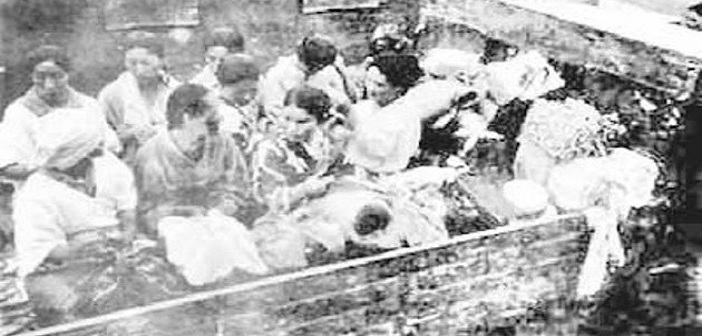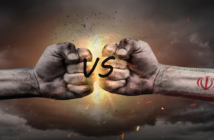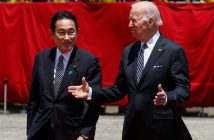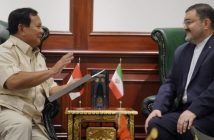Anggia Putri Nilasari
Catatan Redaksi: Comfort Womenmerupakan bagian integral dari militerisme Jepang pada Perang Dunia II yang hingga kini masih menghantui warga masyarakat di kawasan Asia Pasifik, tak terkecuali Indonesia. Anggia Putri Nilasari, salah seorang pembicara dari Indonesia pada Konferensi Perang Dunia II di Malaysia 13 Mei lalu, secara khusus membedah tema ini secara informatif dan eksploratif.
Mengingat pentingnya tema ini, kami sengaja menurunkan artikel ini dalam bahasa Inggris baik untuk edisi Indonesia maupun Inggris. Kami Dari Global Future Institute juga mengucapkan terimakasih kepada Kazi Mahmood, pemprakarsa Konferensi yang telah mengundang Anggia Putri Nilasari untuk mengangkat tema yang sangat penting ini.
—————–
An issue that is still disputed by the Japanese politicians is that of the so-called “Comfort women”. Comfort women is a euphemism for women working in military brothels, especially those women who were forced into prostitution as a form of sexual slavery by the Japanese military during World War II.
Around 200,000 are estimated to have been involved, with estimates as low as 20,000 from some Japanese scholars and estimates of up to 410,000 from some Chinese scholars, but the exact numbers are still being researched and debated. Historians and researchers have stated that the majority were from Korea, China, Japan and Philippines, but women from Thailand, Vietnam, Malaysia, Taiwan, Indonesia, and other Japanese-occupied territories were also used in “comfort stations”. Stations were located in Japan, China, the Philippines, Indonesia, then Malaya, Thailand, then Burma, then New Guinea, Hong Kong, Macau, and what was then French Indochina.
Young women from countries under Japanese Imperial control were reportedly abducted from their homes. In some cases, women were also recruited with offers to work in the military. It has been documented that the Japanese military itself recruited women by force. It is estimated that only 25 percent of the comfort women survived and
that most were unable to have children as a consequence of the multiple rapes or the disease they contracted. According to Japanese soldier Yasuji Kaneko, “The women cried out, but it didn’t matter to us whether the women lived or died. We were the emperor’s soldiers. Whether in military brothels or in the villages, we raped without
reluctance”. Beatings and physical torture were said to be common. Hank Nelson, emeritus professor at the Australian National University’s Asia Pacific Research Division, has written about the brothels run by the Japanese military in Rabaul, Papua New Guinea during World War II. He quotes from the diary of Gordon Thomas, a prisoner-of-war in Rabaul. Thomas writes that the women working at the brothels “most likely served 25 to 35 men a day” and that they were “victims of the yellow slave trade”. Nelson also quotes from Kentaro Igusa, a Japanese naval surgeon who was stationed in Rabaul. Igusa wrote in his memoirs that the women continued to work through infection and severe discomfort, though they “cried and begged for help.”
However Japanese historian Ikuhiko Hata stated that there was no organized forced recruitment of comfort women by the Japanese government or military. Many military brothels were run by private agents and supervised by the Japanese Army. Some Japanese historians, using the testimony of ex-comfort women, have argued that the Imperial Japanese Army and Navy were either directly or indirectly involved in coercing, deceiving, luring, and sometimes kidnapping young women throughout Japan’s Asian colonies and occupied territories. In 2007, former education minister Nariaki Nakayama declared he was
proud that the Liberal Democratic Party had succeeded in getting references to “wartime sex slaves” struck from most authorized history texts for junior high schools. “Our campaign worked, and people outside government also started raising their voices”, he told. He also declared that he agreed with an e-mail sent to him saying that the “victimized women in Asia should be proud of being comfort women”.
On June 22, 1998 Gay J. McDougall, Special Rapporteur to the United Nations Human Rights Commission, released Contemporary Forms of Slavery, a report based on prior UN investigation by Linda Chavez documenting systematic rape, sexual slavery and slavery-like practices in wartime in general but which was mainly aimed at bringing wider attention to the deep harm to human rights caused by Japan’s comfort women program during World War II. The report detailed the official Japanese government stance as well as the UN’s own legal position. MacDougall was awarded a MacArthur Fellows Program “genius” grant the year after her analysis.
The 1998 UN report listed their findings regarding Japan’s guilt and liability:
- The system of comfort women used by the Japanese government during WWII falls under the international definition of slavery at the time, and slavery (sexual or otherwise) was illegal at the time. The 1926 Slavery Convention embodies one such definition. International prohibition of slavery was included in the Tokyo Charter which was used to make the International Military Tribunal for the Far East.
- Rape (including forced or coerced prostitution) was a war crime at the time; regardless of whether prostitution was widespread during World War II.
- Enslavement and other inhumane acts committed by the Japanese government can be considered “crimes against humanity.” In crimes against humanity, the nationality of the victim is irrelevant thus, (it doesn’t matter if the Japanese government was committing crimes against its enemies’ citizens or its own) it is liable for these offenses.
- The Japanese government is liable for crimes against humanity because of the considerable scale on which these crimes were committed.
- Arguments that the enslaving and raping of comfort women was perfectly legal at the time is similar to an argument that was used and refuted at the Nuremberg Trials.
According to political scientists the root of the historical problems of Asia lays in the reluctance of the modern Japanese government to assume the responsibility for waging of aggressive wars and military crimes committed before 1945. There’s also a point of view that a delayed-action mine was laid half a century ago by the International Military Tribunal for Far East. That Tribunal inflicted penalty on several representatives of the Japanese military clique but failed to condemn definitely the regime itself. In fact that uncertainty provided the subsequent governments and a Japanese nation in a whole with a reason to feel free of any necessity to repent and apologize for the crimes committed by their ancestors.
Presented by Anggia Putri Nilasari, at the International Conference on World War 2 & The Rise Of Multilateralism,” in Kuala Lumpur-Malaysia, on 13 May 2010.




